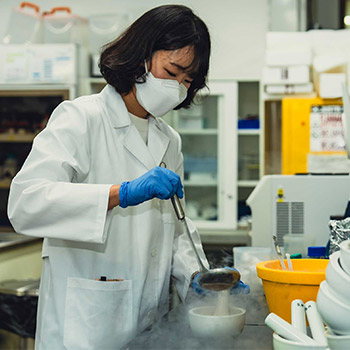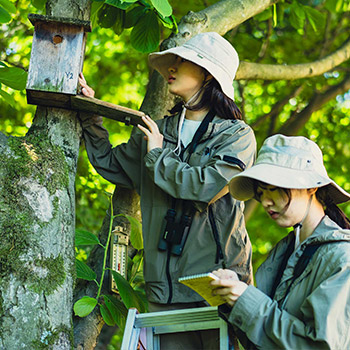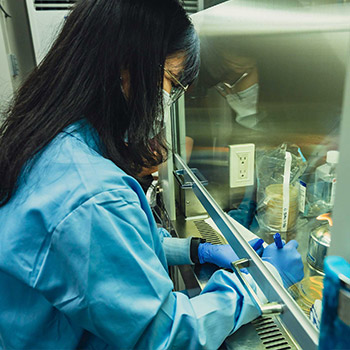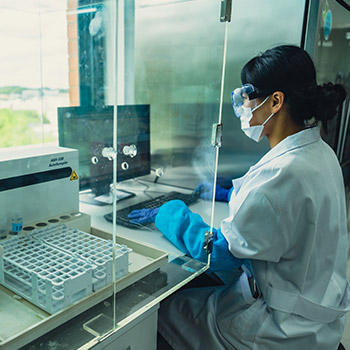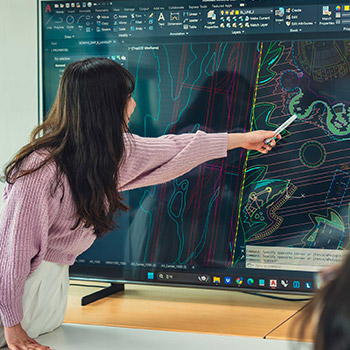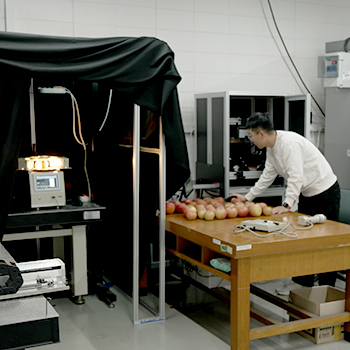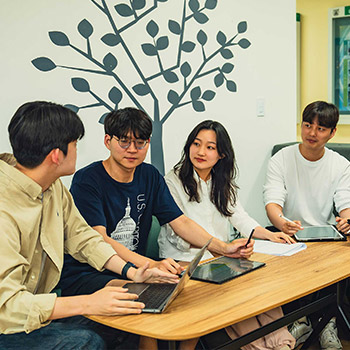The College of Agriculture and Life Sciences at Seoul National University conducts various programs to strengthen the academic capabilities of undergraduate and graduate students. One of them is the CALS Graduate Student Convergence Creative Research Program, which provides graduate students with opportunities for interdisciplinary research and supports the development of their creative convergence research capabilities. This program enables participants to design and conduct creative, interdisciplinary research related to their majors and produce meaningful research results. Today, we interviewed Seoyeon Park, a graduate student who participated in the programme.
Q. Could you briefly introduce yourself?
A. Hello, I am Seoyeon Park, a PhD candidate in the Department of Biomaterials Engineering at the School of Agriculture and Biological Resources. I am currently conducting research with my advisor, Professor Tae-Il Kim, in the Biomedical Biopolymer Materials Laboratory. My main research interests are gene and drug delivery systems (DDS) using various organic and inorganic materials.
Q. What is the Graduate Interdisciplinary Creative Research Programme?
A. The Graduate Student Collaborative Creative Research Program is a program that strengthens students' creative research capabilities by providing collaborative research opportunities with other schools or departments that are normally difficult to collaborate with. Graduate students can become the principal investigators and develop projects directly with collaborators. The advantage of the program is that graduate students can independently and creatively research on their own topics, unlike the typical focus on national or industrial projects.
Q. Can you tell us about your research?
A. My team's research focuses on non-coding RNA regeneration and neural regeneration using hydroxyethylcellulose-based gene delivery systems. Currently, neurological diseases are increasingly prevalent worldwide due to aging and environmental stress. Damage to the nervous system reduces the quality of life and often is life-threatening. Damaged axons in the central nervous system, for example, are nearly impossible to regenerate and effective treatments have yet to be developed.
Recent studies in nerve regeneration have reported that several transcriptional regulatory pathways can promote the regrowth of neurites, and that non-coding RNAs in particular can act as critical regulators of nerve exon regeneration. However, since RNAs, by themselves, are immediately degraded by hydrolysis and nucleases when directly injected into the body, a delivery vehicle is needed to protect and deliver the RNA stably and effectively to the target cells or tissues.
Traditionally, adenoviral vectors have been used as delivery vehicles, but since the risks of viral vectors have been reported, there has been a shift towards more natural materials that are less toxic to the body. Hydroxyethylcellulose is known to be safe enough to be used in cosmetics, and we wanted to use it in this programme based on our previous research using it as a delivery system. We first modified hydroxyethylcellulose into a cationic polymer for gene delivery and then complexed an anionic, non-coding RNA to create nanometre-sized polyplexes. A series of in vitro experiments using the prepared polyplexes confirmed their ability to regenerate cells.
Q. What made you decide to join the program?
A. Previously, I participated in an undergraduate research student creative convergence program in my current lab. I thought it was a good program as I saw how undergraduate students were enthusiastic about leading their own research. The graduate student creative research program required, multidisciplinary research. While this was a prerequisite, idea of collaborating with other labs on creative research was attractive to me, leading to my application.
Q. What have you learnt from the programme?
A. The most enjoyable aspect of the program was the opportunity to work on interesting collaborative research. In my lab, we don't do much in the way of validated RNA discovery or animal experiments, so it was a great opportunity to learn about these areas. I think there is a risk of narrowing your horizons if you only work on your own field in the lab, so it was great to get a broader view of the field. I also benefited a lot from the existing research in the program, and it was great to know that my research could help someone in the future.
Q. What are your future research and career plans?
A. My research focuses on cancer therapy using biomaterials such as cellulose and polyphenols. Recently, I have been working on systems that can utilise inorganic materials such as silica for anti-cancer treatment, and I would like to work with more diverse materials in the future. As for my career plans, I am still in the process of graduating, so I am not specific, but I am positively considering both corporate employment and postdoctoral research.
Q. Finally, do you have any words of wisdom for students at the College of Agriculture who are interested in pursuing research and graduate school?
A. I've been through the college years myself, so I have some idea and empathy for what you're going through. If you have students who are interested in research, I would encourage them to take advantage of our undergraduate research student program, which is very good, and to contact a graduate student or professor for a lab tour.
I remember we had students contacting us and asking about the lab, so we gave them a tour of the lab and talked about graduate school. Don't be afraid to ask professors and graduate students if you have any questions, and don't be afraid to ask them first.
Sometimes the theories you study are not the same as the situations when you actually do research, so you can gain new enjoyment and knowledge through actual experiments. If you're interested in a career in research and development, it would be great to get some experience in a lab to get a feel for whether you're a good fit.
CALS Student
CALS Student
Interview with CALS Graduate Student Convergence Creative Research Programme

